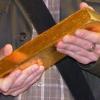Which begs the question, Playground... is the longterm delay in AD progression due to coconut oil consumption related more to bypassing OXPHOS, or to actually killing the pathogens most responsible for the explosion of plaque? I think it's clear at this point that the short term effect is entirely mitochrondrial, but the long term may be a combination of both.
And yeah, Strangelove, what's up with this "no links" policy? I can't seem to post anything with a link it in as of the last couple days.
hi RG,
plaques:
I suspect the 'explosion of plaque' is down to some sequence of events that includes:
1. the immune system creating amyloid proteins in response to a pathogen
2. the involvement of glycotoxins in gluing the amyloid proteins together to create plaques and tangles
I think it may be more difficult for our bodies to remove these proteins once they're glued together.
So,... it's probably important for those with dementia (or those on the road to dementia: with T2D
or pre-diabetes) to change their cooking habits (and eating habits) to ensure they have a low-glycotoxin
environment in their body.
It's a good idea to do as you're doing, RG... which is to supplement with Curcumin and add turmeric to
your diet in order to facilitate the break up of these plaques. It might also be a good idea to take other
herbs known to dis-aggregate amyloid and tau: turkey rhubarb root (from essiac) and danshen (from danhong).
There are probably other herbs that do this too.
It's probably also a good idea to take 'detox' measures too:
NAC, vitamin C, coffee enemas, aerobic exercise. etc.
blood sugar:
I suspect the pathogens consume the glucose in our blood (i.e. our blood sugar).
So diabetes presents a utopia to some pathogens. I know that candida likes a sugar
rich environment, as does Chlamydia trachomatis (the sexually transmitted infection) and it wouldn't
surprise me to discover that Chlamydia pneumoniae does too.
Probably, this 'consuming glucose' property it's true for some pathogens and not others.
In any case, consuming coconut oil, nuts, seeds, ... any fats except trans-fats ... would be a good idea
because it provides an impoverished environment for glucose consuming pathogens.
Probably, the numbers of these pathogens is in some kind of equilibrium with their food supply.
Reduce their food supply, reduce their numbers.
dormant not dead:
We normally assume that loss of memory and cognitive ability in dementias is a result
of the death of neural cells. But maybe that's not quite right.
When you read the Dr Mary Newport accounts of her giving coconut oil to her husband Steve
there is an interesting detail that no one seems to comment on. It's this: Steve was getting
scores of around 14 on some dementia test (the clock test, perhaps). After taking the coconut
oil for some days he started scoring 18. Dr Newport reports that in the weeks and months
following the coconut oil 'discovery' Steve got noticeably better:
He had less brain fog in the mornings. He could figure out how to get water out of the fridge.
he smiled more, he initiated conversation more, he had less confusion over kitchen utensils,
his hand tremor lessened, his walking gait improved. This is normally taken to mean that
neural cells can run on two forms of energy: (1) glucose (2) medium chain triglycerides (MCT).
The detail which i think is commonly missed is that the improvement in Steve's cognition
must have been because neural cells were dormant and not dead. If these brain cells
were dead, there could be no recovery of function and memory. So there must be a
dormancy stage that neural cells go through before being lost forever. How long does
this dormancy stage last ? I don't know, but i'll guess at 1 to 6 months.
The implication of this is that.... you can indefinitely postpone the mass loss of brain cells
by feeding yourself coconut oil on a daily basis (2 to 4 tablespoons according to Dr Newport).
...but in the long term
RG, yes, i agree with you.... that in the long term coconut oil is probably doing both:
1. acting as a fuel source for neural cells
2. killing off the pathogens that contributed to the neural die off in the first place.
So, happily,.. it works in two beneficial ways.
cerebral shrinkage:
My mind keeps coming back to cerebral shrinkage. I imagine that brain cells die off and the
body clears out the dead neural cells and over time.. the brain shrinks.
Consider the opposite scenario. Consider the physical features of an 8 year old child.
Consider the same individual aged 16 years. The child has probably grown by an extra
12 to 24 inches in height. His/her legs, arms, body... everything has grown in size...
including the head and brain. There isnt' a big gap between the brain and skull of a 16 year
old child, they've both grown together.
Question: What made the body (and brain) of the 16 year old grow ?
Currently, the received wisdom tells us it's human growth hormone (HGH) that does this.
And there is a recent review article suggesting that HGH causes neurogenesis in adults.
http://www.ncbi.nlm....pubmed/25156632
There are lots of articles on pubmed suggesting that thyroid hormones
are causal of adult neurogenesis. Here's one paper from June 2015:
http://www.ncbi.nlm....pubmed/25772646
(note: production of these hormones relies on adequate iodine, and most people
are deficient - so... eat more sea fish and/or buy sea kelp tablets)
Perhaps it's regular neurosteriods (pregnenolone, testosterone, DHT etc)...
or perhaps there are receptors related to GCSF ... that induce whole brain growth.
The important point is that it must be possible to reverse shrinkage, because
our bodies 'grow' our brains naturally during adolescence.
playground
Edited by playground, 02 July 2015 - 03:35 PM.




















































